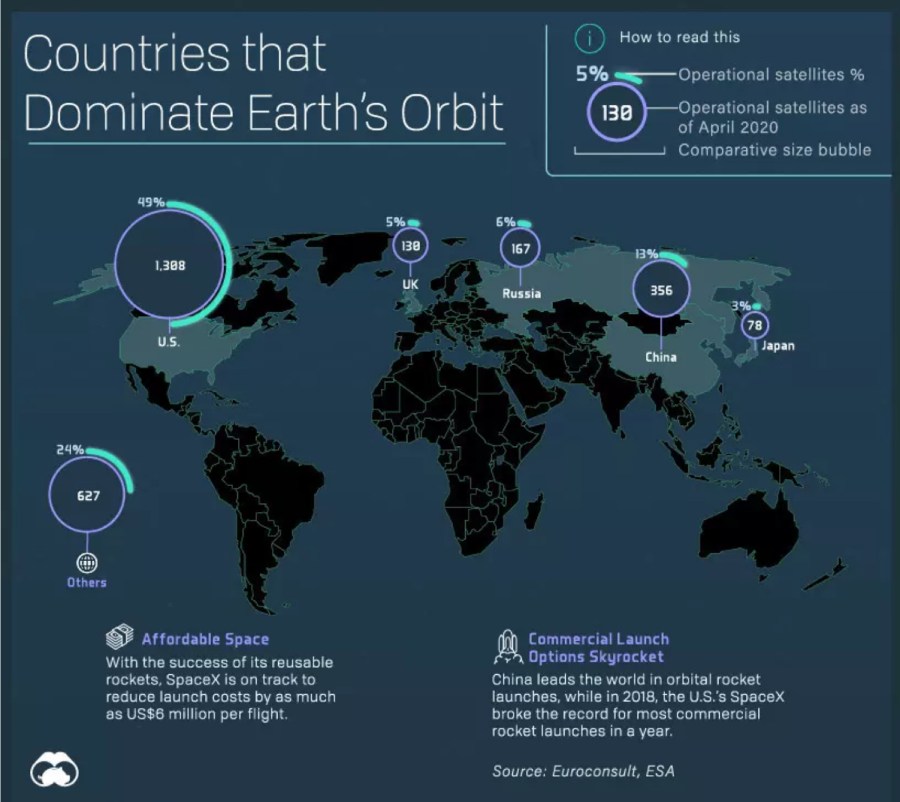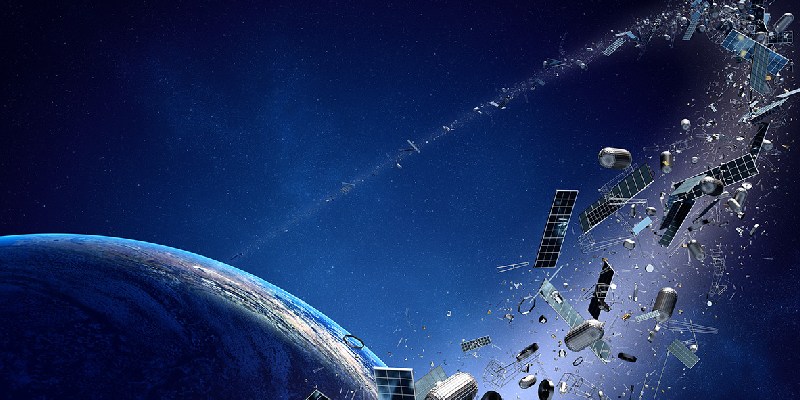Exploration is an innate desire of human beings. For centuries, humans have looked to space and the stars for answers. The fascination is more than philosophical—it’s coupled with the need to solve problems here on Earth. In the past 100 years, humans have landed on the Moon, built an International Space Station, and successfully landed multiple Rovers on Mars.
Today, there are seemingly countless benefits and applications of space technology. Satellites, for instance, are becoming critical for everything from internet connectivity and precision agriculture, to border security and archaeological study.
Where the original space race was a nationalistic competition between Cold War rivals, the new space race is collaborative and commercialized.
Today, international cooperation allows for the deployment of satellites, as well as space-based science. Before SpaceX, NASA and the other space agencies that operate the International Space Station had been reliant on Russian Soyuz rockets for hundreds of missions.
With the success of its famed reusable rockets, SpaceX is on track to reduce launch costs by as much as US$6 million per flight—which is likely to support the proliferation of satellites in the coming years.
Right now, there are nearly 6,000 satellites circling our tiny planet. About 60% of those are defunct satellites—space junk—and roughly 40% are operational. Over the coming decade, it’s estimated by Euroconsult that 990 satellites will be launched every year. This means that by 2028, there could be 15,000 satellites in orbit. With improved technology and commercial partnerships, all signs point to a crowded orbit.

What are Space Debris:
Space debris includes any nonfunctional human-made object in space, including rocket parts that have been abandoned in orbit after having completed their mission, defunct satellites, fragments from unintentional and intentional orbital collisions and items released during operations. These sources have multiplied to create a large amount of space debris orbiting Earth. According to NASA, there are over 30,000 objects larger than a softball in orbit, traveling at speeds up to 18,000 miles per hour.
This debris is spread across all three of the main regions of space around Earth: low-Earth orbit (LEO), medium-Earth orbit (MEO) and geosynchronous equatorial orbit (GEO). As its name suggests, LEO is the closest to us, extending up to 2,000 km from the Earth’s surface.
It is the most crowded region of the three and, in addition to hosting the International Space Station, it is the region where SpaceX, OneWeb and other well-funded companies are currently sending tens of thousands of new satellites as part of their constellations. Perhaps not surprisingly, LEO is the region with the most debris. As a result, it tends to be the focus of much of the discussion around the issue.
Issues caused by space debris
The existence of space debris is concerning for many reasons, with physical collisions being the most obvious. The possible risk caused by space debris is magnified by the incredible speed at which debris typically travels. According to NASA, there are over 30,000 objects larger than a softball in orbit, traveling at speeds up to 18,000 miles per hour. At that speed, any one of these objects is capable of completely destroying a spacecraft.
Space junk poses other challenges as well. Astronomers lament that light pollution from objects in orbit hampers observation of the night sky. The reliance of observatories — often involving equipment costing hundreds of millions of dollars — on long exposures makes debris particularly problematic.
Solution
In view of the constant increase in space-traffic, we need to develop and provide technologies to make debris prevention measures fail-safe. In parallel, regulators need to monitor the status of space systems as well as global adherence to debris mitigation under their jurisdiction more closely.
NASA and other commercial players in the space are working on various technological improvements that will help in solving the issues related to space debris. NASA created a material that can heal itself in less than a second from hurtling space debris.
One group that is often overlooked, but that has the potential to strongly affect the future path toward the sustainable use of space, is comprised of end users of space-based services. This encompasses anyone from telecommunications customers to users of imaging data to transportation companies relying on satellites to track their ships and planes. If end users demand sustainability like other sectors, it would likely force launch providers and satellite operators to act.
Finally, there is a new stakeholder that is trying to solve the challenge of space debris. Startups such as Astroscale and D-Orbit are making progress toward commercializing the removal, or at least mitigation, of space debris. Another example is LeoLabs, a ground-based space mapping provider, whose phased-array radars are capable of tracking debris as small as 2 cm.

References:
https://spacenews.com/u-s-satellite-destroyed-in-space-collision/
https://www.space.com/3415-china-anti-satellite-test-worrisome-debris-cloud-circles-earth.html
https://www.space.com/india-anti-satellite-test-significance.html
https://www.weforum.org/agenda/2020/10/visualizing-easrth-satellites-sapce-spacex/
http://www.esa.int/Safety_Security/Space_Debris/The_current_state_of_space_debris
*****This Article was Contributed by Santosh Ankola, Member ASEI Silicon Valley *******

